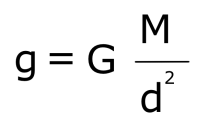Gravitation : Introduction
All planets go around the solar system while the moon revolves around the earth. There must be a few pressures appearing at the items – the planets and on the moon in some of these instances. Isaac Newton should grasp that equal force is liable for any of these. This pressure is known as the gravitational force.
Gravitation
All objects within the universe entice every different. This pressure of attraction among objects is called gravitational pressure.
Centripetal pressure
- The pressure causes the acceleration and maintains the frameshifting alongside the round direction
- It acts in the direction of the center. Centripetal approach ‘center-seeking’
- The movement of the moon across the earth is due to the centripetal force
- The centripetal force is provided by means of the force of attraction of the earth
- If the centripetal force is absent, the moon will follow a uniform straight-line motion.
The universal law of gravitation
Gravitational force between two uniform objects directed along the line joining their centers
- Let two articles, A and B of masses M and m, lie a good ways off d from one another. Leave the power of fascination between two items alone F.
Importance of Gravitation
The time-honoured regulation of gravitation effectively defined numerous phenomena which have been believed to be unconnected:
- This force is responsible for binding us with the Earth
- The motion of the moon around the earth
- The movement of planets across the solar system
- The tides because of the moon and the sun.
Free Fall
- On every occasion, gadgets fall in the direction of the earth below the gravity by
- Due to the earth’s attraction, there might be an alternative in the magnitude of the velocity
- Any alternate pace includes acceleration, which is because of the earth’s gravitational force
- Therefore, this acceleration is known as the acceleration due to the gravitational force of the earth (or acceleration because of gravity)
- It’s denoted by g. The unit of g is similar to that of acceleration, which is ms-2
- The magnitude of the gravitational pressure F will be equal to the product of mass and acceleration due to the gravitational force; this is, F = m g
Calculating ‘g’:

- Here M is the mass of the earth, and d is the gap between the item and the earth
- If an item is on or close to the surface of the earth, the space may be equal to R (the radius of the earth). As a result, for objects on or near the surface of the earth
- The force of gravity decreases with altitude
- It additionally varies at the floor of the earth, reducing from the poles to the equator
- The cost of acceleration because of gravity of the earth, g = 9.8 kgm/s².
Mass
- The mass of an object is the degree of its inertia
- The more the mass, the more is the inertia
- The mass of an object is constant and does no longer change from location to area.
Weight
- The earth draws each object with a certain pressure, and this pressure relies upon the mass (m) of the object and the acceleration because of gravity (g)
- The burden of an item is the pressure with which it is attracted toward the earth
- It is denoted through W
- W = m × g
- The SI unit of weight is similar to that of pressure, Newton (N)
- The weight is a force that acts vertically downwards and has each importance and path
- Weight depends on its place because g relies upon its vicinity.
- Weight of the object on the moon = (1/6) × its weight on the earth.
Kepler’s laws
- The shape of the orbit of a planet is observed to be an ellipse with the sun at one of the foci
- The line joining the planet and the solar sweep equal regions in the same periods
- The dice of the mean distance of a planet (r) from the sun is proportional to the rectangular of its orbital period (T), Or r 3/T2 = constant.
Conclusion
All planets go around the solar system, while the moon revolves around the earth. There is a certain kind of pressure that appears on these items, particularly on the planets and on the moon. This pressure is known as the Gravitational force. Gravitation is of great importance as it is responsible for binding us with the Earth, motion of the moon around the earth, movement of planets across the solar system. The value of acceleration; due to the gravity of the earth; is g = 9.8 m/s². The mass of an object is defined as the degree of its inertia, and weight is a force that acts vertically downwards and has each importance and path. It is denoted through W and W = m × g and SI unit of weight Newton. According to Kepler’s laws, the shape of the orbit of a planet is observed to be an ellipse, with the sun at one of the foci.
 Profile
Profile Settings
Settings Refer your friends
Refer your friends Sign out
Sign out













